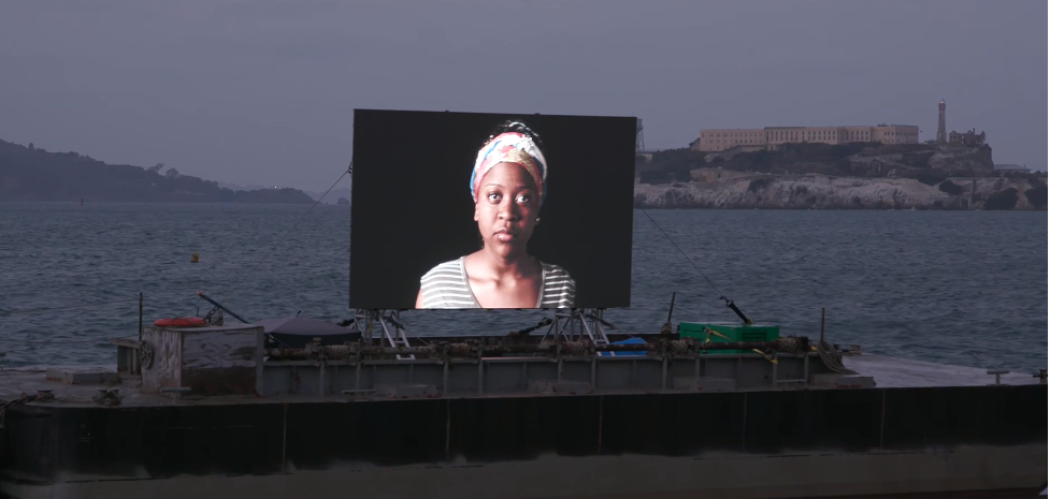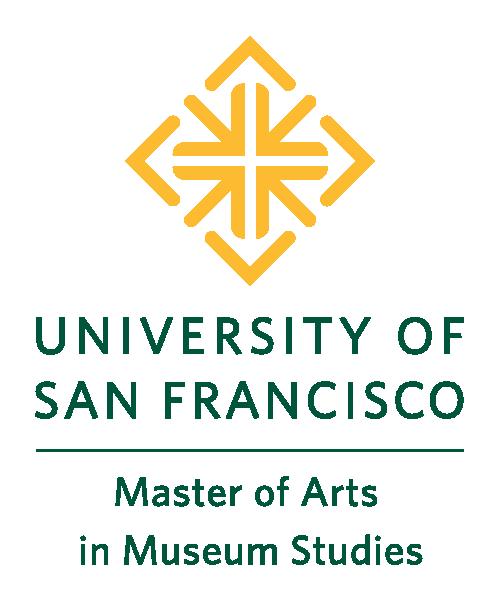Over the past summer, students of the Museum Studies MA Program had the opportunity to put what they have been learning in class to action through internships with museums and other non-profit organizations in the Bay Area and across the country. Students were introduced to different areas of museum management in action, from collections management and museum education to development and museum strategy, while regularly reflecting on their experiences and their organizations through an accredited Graduate Internship class.
Read on for a roundup of some the internships that the Class of 2022 participated in this summer:

Averi Beck, President of the current Museum Studies Graduate Association, interned across the San Francisco bay at the Bay Area Discovery Museum this summer. As a children’s museum, one important aspect of the museum’s work involves the school tours that they host for students from all over the Bay Area. However, these programs can sometimes exclude certain groups of students and children who are unable to access the museum. Averi’s internship project saw her working on a large-scale equity and accessibility project relating to these core programs at the museum.
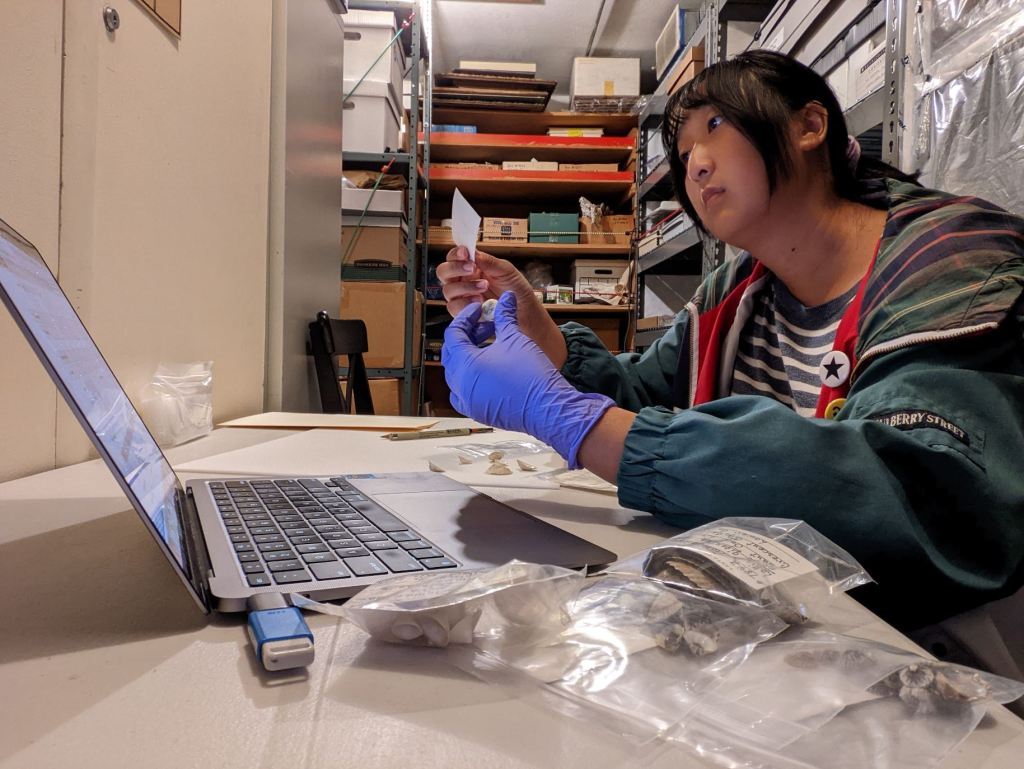
Pursuing their passion for wildlife and natural history, Samantha (Sam) Chow is working with the Collections team at the Santa Cruz Museum of Natural History for their summer internship.
Sharing about their internship project, Sam writes, “a few things I’ll be helping out with include the creation of condition reports and the digitization of their current collection. The museum also recently acquired a huge donation of dry shell specimens, so it’ll be pretty cool to get some hands-on experience with the accessioning of these new objects. Shout-out to Professor Añoveros for prepping me with her collections management class!”
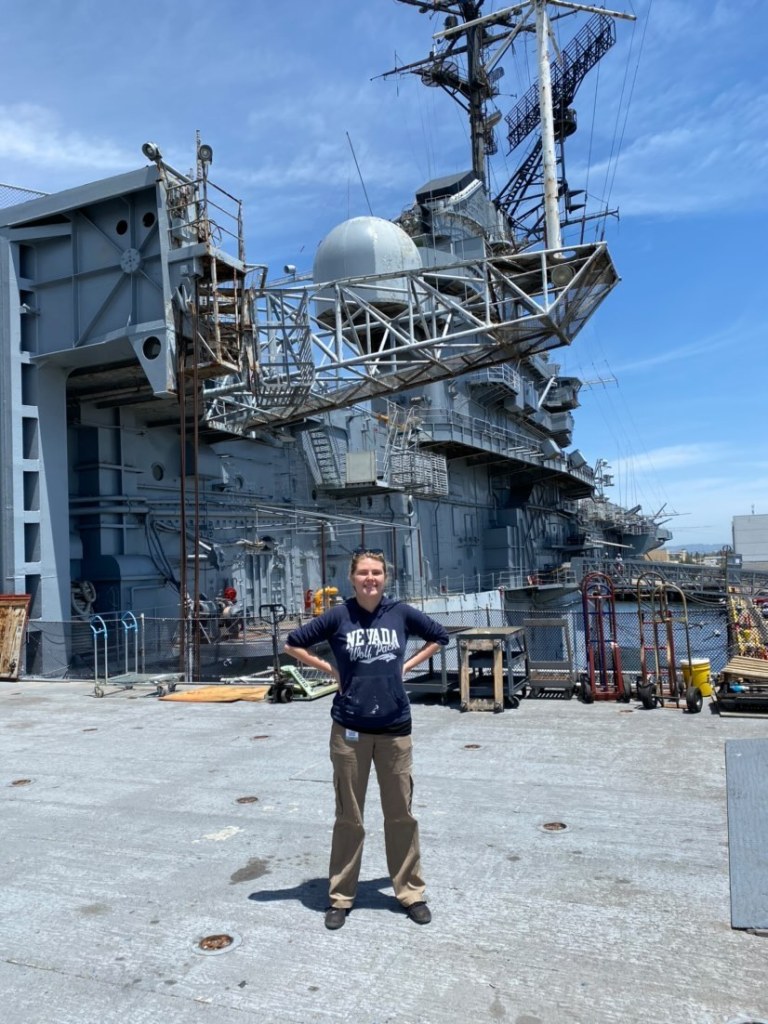
Many of the Museum Studies MA students get the opportunity to work directly with memorabilia from iconic moments in history. This summer, Erika Cory worked closely with the collection of the USS Hornet — Sea, Air, and Space Museum, rehousing artifacts, processing new acquisitions and loan renewals, as well as getting involved in restoration projects related to the ship and aircraft.
Located just across the San Francisco bay in Alameda, the USS Hornet was an aircraft carrier that was active during World War II. After the war, the ship became the designated Prime Recovery Ship for Apollo 11, the first lunar landing mission that successfully placed humans on the moon.
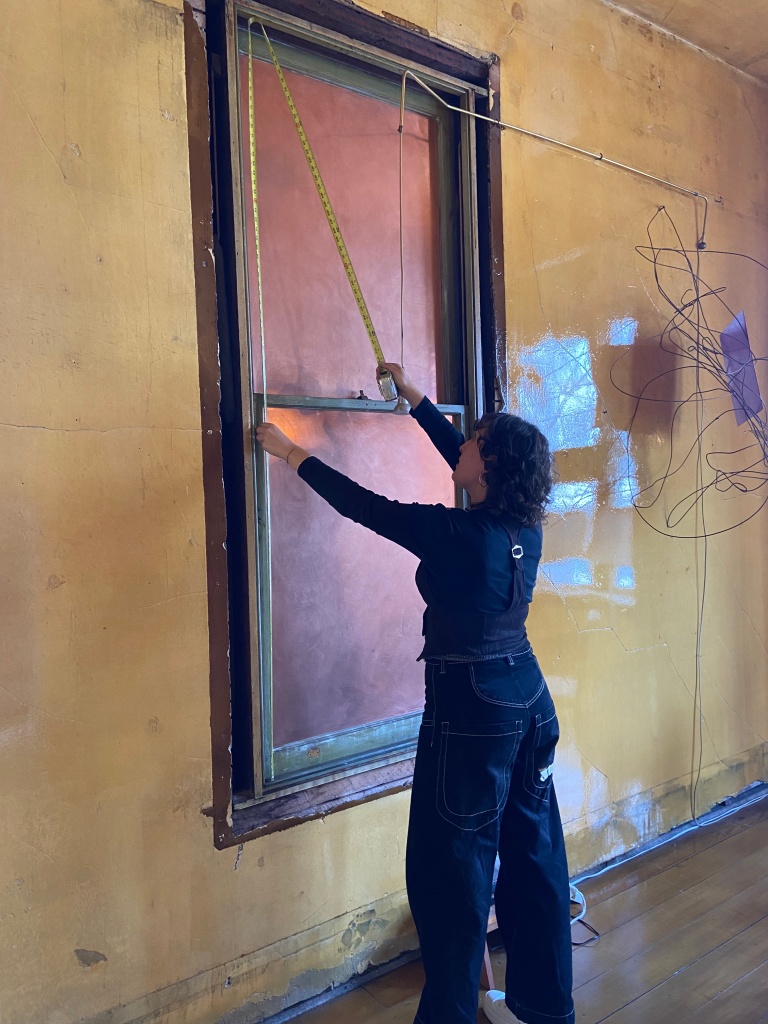
Interning at the David Ireland House, located at 500 Capp St. in San Francisco’s Mission District, Courtney Crother received first-hand experience in arts program management. During her internship, she created an information packet about the space for guest artists invited to curate the space, she designed graphics for the culminating performance of an artist residency program, worked with archives, and helped to handle and move art in-between exhibitions.

As an extension of her work as an Interpretation and Outreach Associate at the de Young Museum in San Francisco, Rocio Garcia spent her summer interning with the de Young’s Education department. She worked on the de Young Summer Art Camp program, produced in collaboration with San Francisco Recreation & Parks. The summer camp program draws on community-based partnerships to offer expanded and equitable access to its collections, and centers its teaching programs in the communities of San Francisco and Oakland. During her internship, Rocio developed and led tours for K-12 audiences, and created and facilitated age-appropriate community-building activities with the summer campers.
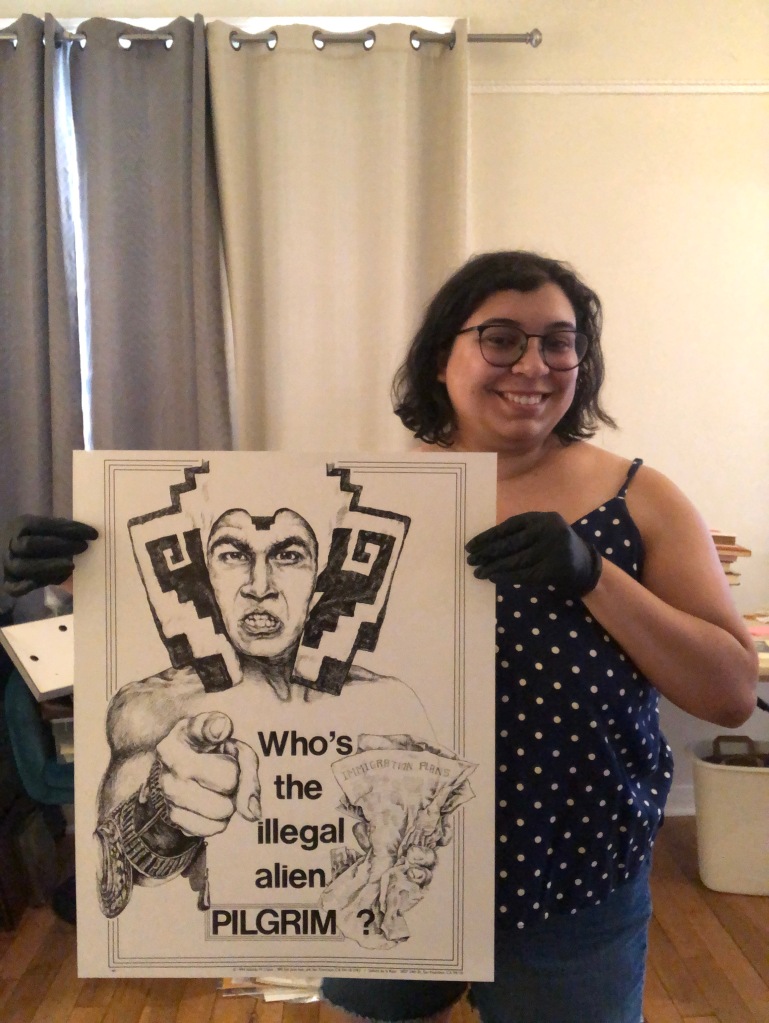
Lisa Guerrero interned with the Yolanda Lopez Estate to organize and archive the late artist’s incredible collection of artwork, documents, and other ephemera. When asked about the internship earlier during the summer, Lisa shared that she was part of a team of two working to sort, catalog, and preserve the artwork and other ephemera made and used by Lopez in her apartment under the supervision of Lopez’s son, Rio Yanez. These objects ranged from installation ephemera to Lopez’s dissertation papers, in which she discussed the representation of Hispanics in the media. During the internship, Lisa used and taught her colleague about the program CatalogIt, which helps them to digitally document the papers, objects, and other items found in Lopez’s basement.
Lisa added that “I initially wanted to be a part of this team because I knew I would be able to access Lopez’s notes on Chicana studies and representation based on the reference materials she collected. Many of her works show the struggles of Chicanas and women in the U.S, and it is critical to keep documentation of her work so her contributions will not be forgotten.”
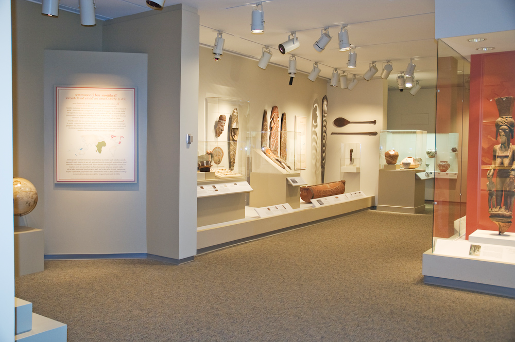
Kate Korsh interned at the Memorial Art Gallery (MAG) at the University of Rochester, New York, over the summer, working closely with the gallery’s leadership team to figure out ways that they might begin to redress the historical inequities created by systemic colonialism, racism, and sexism still present in the space today.
Her work focused on the Art of Africa, Oceania and Americas (AOA) gallery, a limited and fairly static collection that retains the assumptions, limitations, and omissions of the traditional Western art historical model. In contrast, the MAG’s American and European collections have grown over the years owing to dedicated curatorial expertise and financial resources.
Drawing on her past experiences and takeaways from the class, Cultural Heritage and Social Justice, Kate will bring together an interdisciplinary group of faculty and thought leaders to explore the critical and timely questions facing the gallery today. This endeavor will serve as the leading edge for a broader museum-wide initiative and will showcase the MAG’s leadership in tackling such challenging issues facing the museum community today.
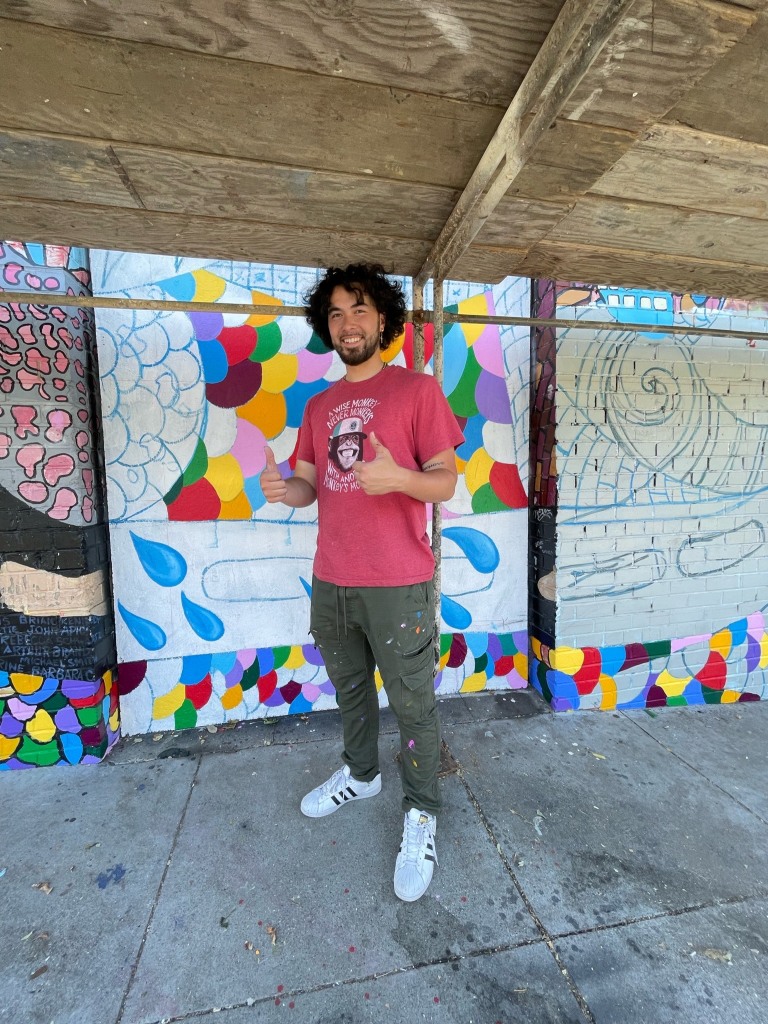
Jared Mar, who also has an art practice in sculpture and embroidery, helped to restore murals during his internship with Precita Eyes Muralists, an organization that creates and manages the vibrant public art in the city of San Francisco. Earlier in the summer, Jared was working on the Hope For A World Cure Mural project, and was restoring a 25-year-old mural that was designed to represent the emotional, physical, and spiritual pain of the HIV/AIDS epidemic experienced by the LGBTQ community.
Giving insight into the significance of this mural and his process, Jared shares, “this mural means a lot to me because I used to drive by it on my way to church growing up. The mural is as old as I am and now I get to make it new again.
Before working on the wall, I spent a week looking at old archives to redraw and trace the original design because the mural had been vandalized pretty badly and needed the first 6 feet off the ground to be redrawn.
Then we had to clean the mural and lead-test it. After finding lead coming from the original bricks, we needed to encapsulate it so that the toxicity wouldn’t leak out while we were restoring the mural. After that, I spent time redrawing parts of the bottom half of the mural. I just started painting last week, color matching the old faded paint to the new paint we have.”

This summer, Alex Murray interned at the Ninth Judicial Circuit Historical Society (NJCHS), which was founded in 1985 to “preserve and promote the vibrant history of the law in the Ninth Circuit, and to raise awareness of the important role that the judicial system plays in our society” (NJCHS website). She worked on three projects throughout the summer: a trivia-writing project, a project to create promotional material in the form of postcards for each courthouse in the Ninth circuit, and a project to write blog posts taking readers on virtual tours of each courthouse.
Check out the postcards that Alex designed in greater detail on the NJCHS website, and read more about the successes and challenges that she faced during her internship in her post on the Museum Studies MA program’s blog.

Building on her role as an Annual Giving Associate at the San Francisco Museum of Modern Art (SFMOMA) where she oversees the Society for the Encouragement of Contemporary Art (SECA) Award, Becca Simor worked on a research project assessing the impact and significance of the award to Bay Area artists. She dedicated many hours to researching the history of SECA and the SECA Art Award through archival materials, published works, and interviews, and made reference to the in-class exercises from the Museum Management course taught by Professor Steve Tulsky to craft a marketing plan for the SECA program.
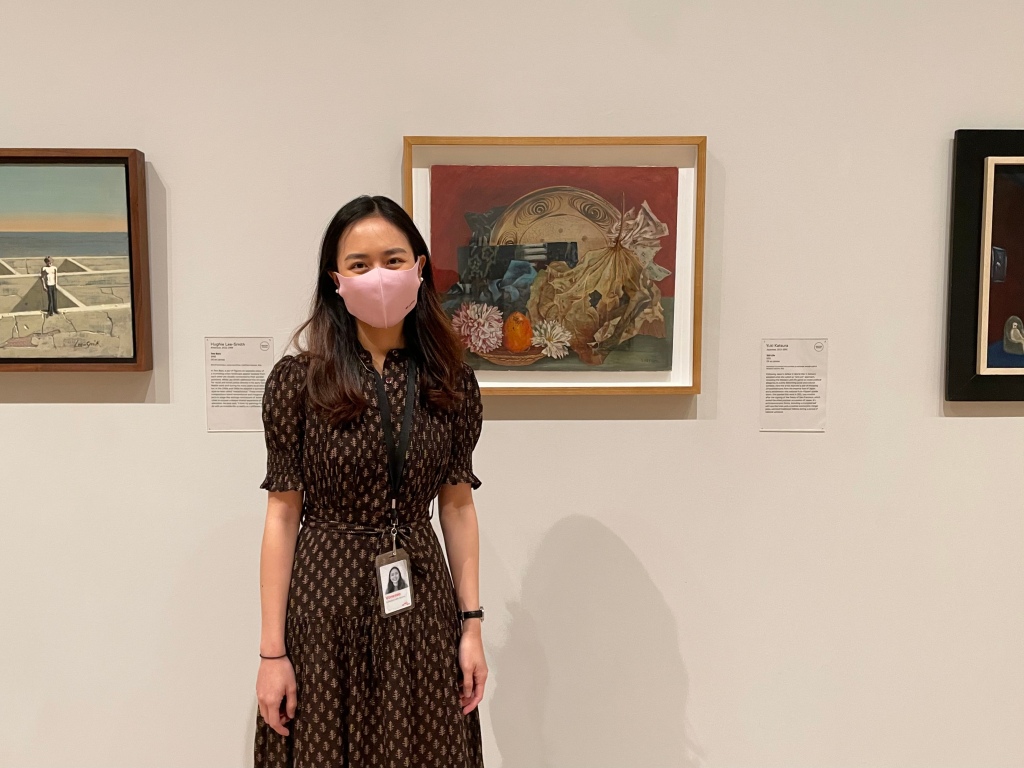
Vanessa Teo was the Art Online intern within the Collections Information and Access team at the San Francisco Museum of Modern Art this summer. As part of her internship, Vanessa selected 100 images of artwork from SFMOMA’s collection and prepared their metadata for submission onto Bridgeman Images, a licensing platform for images and footage of art and artists as well as significant cultural and historical events. To do so, she had to work with her colleagues to make sure the images selected were of sufficiently high quality and cleared any rights management issues. Inspired by the museum’s Artist Identities Data Project, one guiding focus for her selection was also to select artworks by women artists and artists of color.

Sophie Wool’s internship at the California Historical Society expands on her full-time role as the Senior Administrative Assistant to the Executive Director there. For her internship project, Sophie researched the history and impact of the League of Women Voters of San Francisco, while working with multiple departments at the museum: marketing, development, collections, and exhibitions and engagement. She also designed an interactive exhibition space at the museum that accompanies its latest exhibition, Mapping a Changing California: Selections from the Seventeenth to the Twentieth Century.

This summer, Amy Yates interned with the Palo Alto Art Center and Foundation‘s Development Fellow. During the internship, one of Amy’s primary focus areas was to better understand the organization’s fundraising and advocacy needs and strategies, and she had to conduct research on the Art Center’s history and programs, as well as museum memberships, grants, partnerships, and database management in general.
–
These summer internships are a key part of the student experience in the Museum Studies MA program. For more information about the program and its curriculum, please visit our website.
